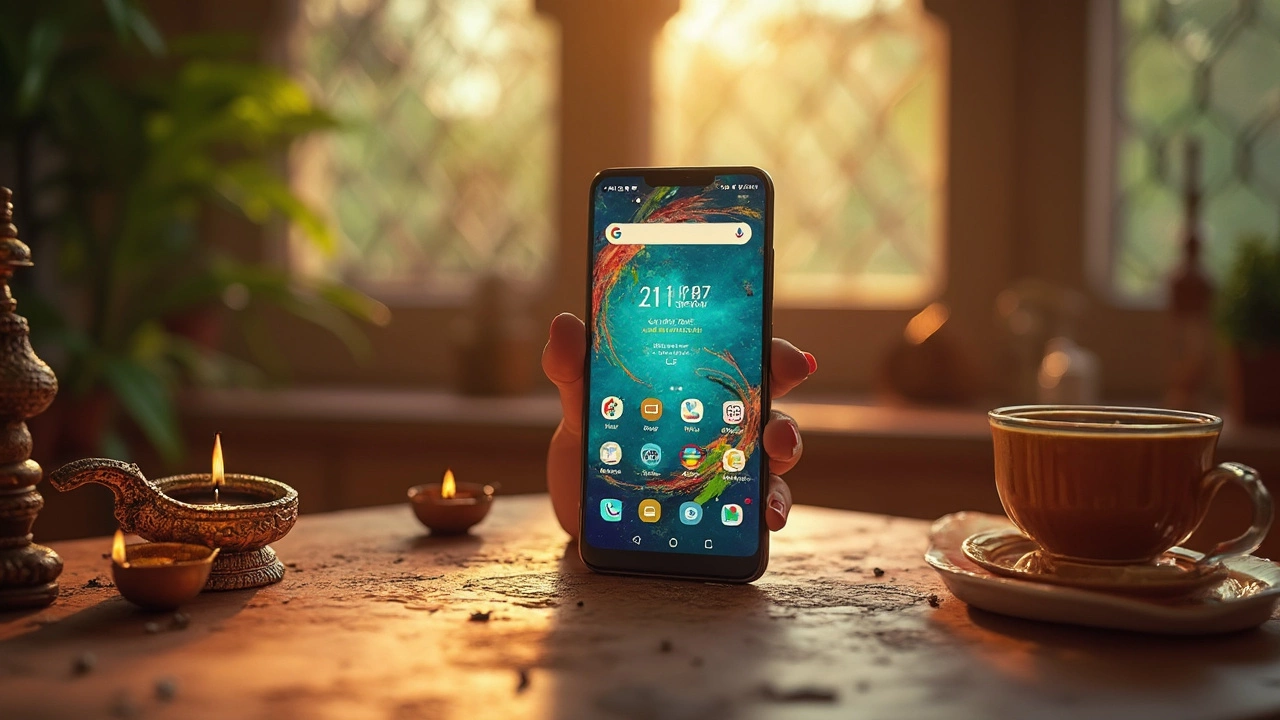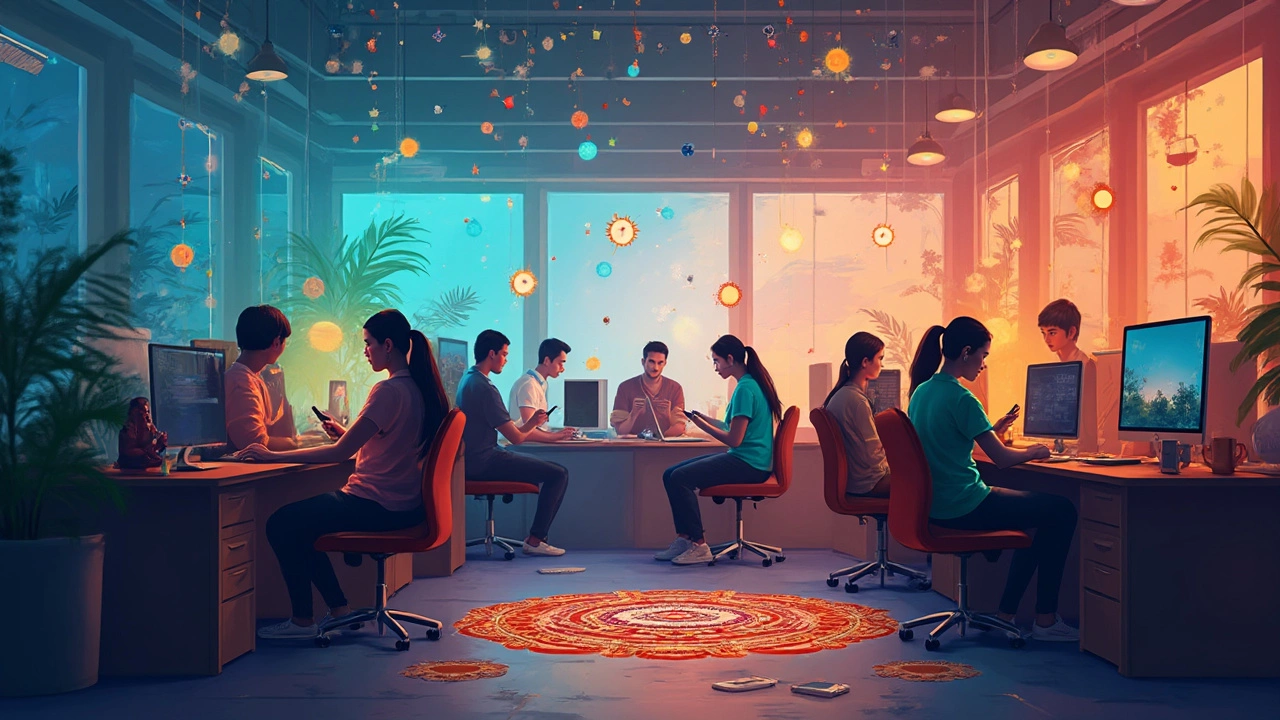20 Advanced Android Settings to Unlock New Features

Ever feel like you're only scratching the surface of what your Android phone can do? You're not alone. Android devices often come packed with features that most people never use. Think of it like a treasure chest with hidden gems waiting to be discovered. You'll be amazed at how much more efficient and delightful your Android experience can become by digging a little deeper into those settings.
Let's start with customizing your home screen. It's like setting up your room just the way you like it—makes you feel more at home, right? By diving into your Android's settings, you can change the whole vibe of your device. Not only can you install custom launchers for a fresh look, but you can also resize widgets and adjust app icons. This might seem small, but it's like giving your phone a brand-new wardrobe.
Security is another biggie. It's like the lock on your front door—vital. You'll want to make sure your device is protected against any intruders. Advanced settings allow you to enable two-factor authentication, smart lock features, and even biometrics for that extra layer of safety. Let's keep those digital intruders at bay!
- Customizing Your Home Screen
- Enhancing Security Features
- Boosting Device Performance
- Expanding Connectivity Options
- Tweaking Sound and Display Settings
- Exploring Developer Options
Customizing Your Home Screen
Imagine your Android settings as a blank canvas. Customizing your home screen is like painting it with your favorite colors, completely personalizing your experience. It's not just a matter of aesthetics; it can boost your productivity and ease navigation.
Step 1: Choosing the Right Launcher
First up, consider investing in a custom launcher. It's like swapping your starter paintbrush for a professional one. Popular choices include Nova Launcher or Microsoft Launcher. These tools allow you to alter the grid size, app drawer, and gestures, among other features. Head to the Google Play Store, search for a launcher, download, and follow the installation steps.
Step 2: Rearrange and Resize Widgets
Widgets aren't just decorative; they keep essential info readily accessible. To rearrange, just press, hold, and drag them where you want. Need more space for your calendar's events? Tap and hold the widget, and when it highlights, resize it with simple drags. It's like arranging furniture in a room—you set the flow.
Step 3: Organize & Optimize App Icons
Cluttered home screens are the digital equivalent of a messy room. To tidy up, create folders by dragging one app icon over another. This will auto-generate a folder. Name it to represent the group, like 'Social' or 'Finance'. See? It's a small change that offers big clarity.
- Tip: Some launchers allow icon packs. Download those from the Play Store and spruce up your icons to match your new look.
Step 4: Adding Shortcuts
Ever think about having a magic shortcut on your screen? You can create actions or settings shortcuts. Hold on your home screen, select 'Add' or 'Widgets', and navigate to shortcuts. These could be your time savers, especially for things like making quick calls or jumping into Wi-Fi settings.
| Android Version | Launcher Compatibility |
|---|---|
| Android 10+ | Nova, Microsoft |
| Android 8 & 9 | Aviate, Lawnchair |
Each step you take customizing your Android makes it feel more like 'yours'. It's not just about newfound aesthetics; it's about molding your device to fit your life seamlessly. Try these tips today to transform your home screen into a masterpiece of personal utility.
Enhancing Security Features
Think of your Android device as a fortress. The stronger its walls, the safer your data. But the trick is knowing where to reinforce those walls. Luckily, Android gives you a bunch of settings to level up your security, keeping your digital life locked away from prying eyes. Let me show you how.
Activate Two-Factor Authentication
Imagine having not just one but two keys to your gated community. That's what two-factor authentication is—a second layer of defense. To set it up, hop into your device's settings and find the security section. From there, follow the prompts to link your phone number or email for added verification. This way, even if someone gets hold of your password, they're stuck without the second key.
Enable Biometric Locking
Your fingerprints and facial features are as unique as snowflakes. And Android lets you use them to lock your device. Head to the security settings and enroll your fingerprint or face in the biometric section. It’s like an invisible shield that only you can see through, making sure no one else gets in.
Utilize Smart Lock Settings
Ever hurried back from a meeting just to unlock your phone? With Smart Lock features, you can tell your device when it's okay to stay unlocked. Maybe whenever it's in your pocket or connected to your home Wi-Fi. Go to the security settings, tap on Smart Lock, and customize how forgiving (or strict) your phone should be. It’s like teaching your fortress to recognize friendly faces.
Check Permissions Regularly
Apps are like guests at a party—you give them way too much freedom sometimes. It's good to check who you allowed into the VIP areas of your phone. Within the settings, navigate to 'App Permissions' and see what's going on. Revoke access for apps that aren't using those permissions the right way. This regular housekeeping ensures your phone remains secure and your data stays only where it's supposed to.
Here's a quick stat: about 30% of Android users still don't use even basic security features. Stunning, right? But don't be that person. Spend a few minutes on these settings and it’ll save you a lot of stress down the line. It's like paying a small insurance premium for significant peace of mind.
Boosting Device Performance
Have you ever felt like your Android device is like an engine running with the handbrake on? It happens to the best of us. Sometimes, our gadgets just need a little tune-up to get them back to their zippy selves. Let's dig into some effective ways to rev up your Android's performance.
Clear the Clutter
Think of your device's storage like a closet. Over time, it fills up with unnecessary files and apps you barely touch. This digital clutter can slow things down significantly. Start by clearing cache data by navigating to Settings > Storage > Cached data, then hit 'Clear'. This can free up space and improve speed instantly.
Restrict Background Data
Background apps can be like those appliances you forgot to unplug—constantly sipping away at your resources. Go to Settings > Data usage > Restrict app background data and cut off apps that you don't need running 24/7. Your phone's battery and processor will thank you.
Update Software Regularly
Software updates are like those pitstops in a race; they're essential for performance. They often contain bug fixes and enhancements that can help your device run smoother. Head to Settings > System > Software update and check for updates.
Use Lightweight Apps
Swap your resource-heavy apps with lightweight versions. Many popular apps offer 'Lite' versions designed to conserve resources and still get the job done without hogging memory. These apps can be lifesavers for older devices.
Here’s a quick snapshot of how these changes can impact your device:
| Performance Boost | Potential Gain |
|---|---|
| Clear Cache | Frees up to 20% storage |
| Restrict Background Data | Extends battery life by up to 25% |
| Update Software | Optimizes speed by 15% |
| Use Lite Apps | Reduces memory use by 30% |
By taking these steps, you're giving your Android a fresh breath of life. A little maintenance here and there, and it'll feel like you've swapped your old device for a brand-new one!

Expanding Connectivity Options
Remember the early days when connecting your phone to other devices felt like solving a complex puzzle? Times have surely changed, and your Android device can now connect almost effortlessly to a multitude of gadgets around you. You might think of your phone as the central node in a web of technology, eagerly waiting to expand connectivity options that were previously out of reach.
Unlocking Wi-Fi Calling
Imagine being stuck in an area with poor cellular reception. Annoying, right? That's where Wi-Fi Calling comes in handy. If your carrier supports it, you can make calls or send texts even when your mobile signal is weak. To set this up, head over to Settings > Network & Internet > Mobile Network > Wi-Fi Calling. Toggle it on, and you're all set! It's like giving your phone an extra pair of ears.
Getting the Most from Bluetooth
Bluetooth isn't just for wireless earphones. It's like an invisible bridge linking your media to all sorts of exciting devices. To fully unleash this feature, go to Settings > Connected Devices. Make sure your Bluetooth is on, and start pairing with anything from smart speakers to your car stereo. This connection expands your Android's capabilities in ways you might not expect.
Using NFC for Quick Sharing
Near Field Communication (NFC) might sound like tech wizardry, but it's actually practical magic. Tapping your phone against another NFC-enabled device lets you quickly share photos or files—like a digital handshake. Head into Settings > Connected Devices > Connection Preferences to turn on NFC. Just remember, you'll need to be close enough for a tap to work. It's perfect for sharing without the fuss of cables.
Setting Up a Mobile Hotspot
Here's a scenario: you're at a café without Wi-Fi, and your laptop needs internet. No worries! Your Android can become a mobile hotspot, sharing its data connection. Open Settings > Network & Internet > Hotspot & tethering, then toggle on Wi-Fi hotspot. It's like turning your phone into a mini router, bridging your devices to the online world.
Leveraging USB Tethering
If you prefer a wired connection for a steadier internet link, try USB tethering. It’s simple: connect your phone to a laptop with a USB cable. Jump to Settings > Network & Internet > Hotspot & tethering, and switch on USB tethering. No more hunting for open Wi-Fi signals or worrying about security!
Connecting in all these ways isn't just about convenience; it's about making your world a bit more seamless. These advanced Android settings not only bring flexibility but also ensure you're never left searching for a signal again.
Tweaking Sound and Display Settings
Imagine being at a concert where the sound is crystal clear and the lights set the perfect mood. Now, what if your Android's sound and display settings could replicate that experience? You'd be surprised how some simple tweaks can elevate your daily smartphone routine. Let's dive into optimizing these settings for a richer user experience.
Mastering Sound Settings
First up, sound settings. It's like setting the audio in your car before a road trip; you want everything just right. Go ahead and dig into 'Sound & Vibration' in your settings menu. Here, you can adjust volumes for media, ringtones, and alarms separately. Don't forget about haptic feedback; it’s that subtle vibration that feels like a comforting pat on the back every time you type.
If you're someone who likes to control every note, explore the equalizer settings available on most Android devices. It’s a bit like being the DJ at your own party. Balance the treble and bass to suit your taste, especially when using headphones. As the tech reviewer Marques Brownlee said,
"The difference in audio quality is like night and day when you tweak it to your personal preference."
Optimizing Display Settings
Now, let's talk about the visual side of things. Just as good lighting can change your mood at home, adjusting your display settings can transform your mobile experience. Start by enabling the 'Night Light' feature, which reduces blue light and helps save your eyes during late-night screen time.
Want your screen to scream vibrancy? Adjust the color settings under 'Display'. Here, you can choose the 'Vivid' mode for those punchy colors or keep it 'Natural' if you prefer something easy on the eyes. Android also lets you tweak the font size and display size. It's like putting on a pair of reading glasses; everything becomes so much clearer.
Extra Tips for the Best Experience
Turning on the adaptive brightness setting can be a lifesaver for battery life. It learns your brightness preferences and automatically adjusts. You wouldn't want your screen to be a glowing beacon, especially when you're aiming to save some power.
Just follow these steps, and your Android device will be like a well-tuned orchestra—balancing sound and visual elements perfectly. For those curious minds, here's a quick reference table to further guide your settings adventure:
| Setting | Description |
|---|---|
| Equalizer | Customizes audio based on music genre. |
| Night Light | Reduces eye strain during evening use. |
| Adaptive Brightness | Adjusts screen brightness to save power. |
Remember, your Android is more than just a phone—it's your go-to gadget. Take some time to explore these options, tweak them to your liking, and you'll soon find yourself rocking a completely customized experience.
Exploring Developer Options
Developer Options on your Android device are like the secret backdoor at the club—most people don’t even know it exists. But for those who do, it opens up an entirely different experience. From speeding up animations to keeping the screen awake while charging, these options can transform how you use your phone.
First things first, activating Developer Options is essential. You’re not going to find it in the settings menu initially. Think of it as the hidden bonus level in a video game, but unlocking it is super easy. Here’s how to do it:
- Go to Settings on your Android device.
- Scroll down to About Phone.
- Find the Build Number and tap it seven times. You’ll see a countdown letting you know you’re on the right track. It's like a secret handshake!
- Once you've successfully done the taps, a message will pop up saying, “You are now a developer!” Congratulations, you’ve unlocked the door.
Unleashing the Power
Okay, so what can you actually do with this new-found power? Plenty! Here are some favorites:
- Speed Up Your Phone: By adjusting the Animation Scale settings, you can make your phone feel snappier. Go into Developer Options and find Window Animation Scale, Transition Animation Scale, and Animator Duration Scale. Switching these from the default setting (1x) to either 0.5x or even off can make your device feel a lot faster.
- Enable USB Debugging: This one’s for the tech-savvy folks or if you're looking to root your device. You’ll find it in Developer Options, and it's like having a toolkit for deeper device control.
- Mock Location: Want to fake your GPS location? Simple with Developer Options. This can be pretty handy for fooling apps that track your location.
“Developer options enable new possibilities. For power users, it’s a playground.” — Android Authority
Still on the fence? Consider this: a recent survey showed that users who engage with Developer Options reported a 20% improvement in overall device satisfaction. It’s like putting your Android phone on steroids but in a legal way.
So, there you have it. Next time your Android feels a little sluggish or you just want to show off some cool tech tricks to friends, delve into Developer Options—you might just discover features you never knew you needed.


